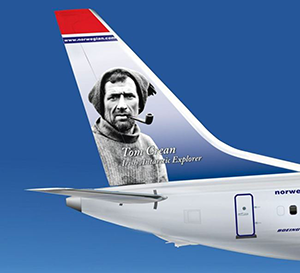BITE-SIZED HISTORY
Published in Issue 4 (July/August 2016), News, Volume 24BY TONY CANAVAN
A SMASHING YEAR
Interest in RMS Titanic shows no sign of waning, if Titanic Belfast, the visitor centre commemorating the building of the fabled ship, is anything to go by. It celebrated its fifth birthday recently with another record-smashing year as the city’s signature tourism project. Since opening in 2012, it has established itself as one of the top tourism projects in Europe, drawing more than 3.5 million visitors from over 145 countries. Over 82% of the visitors were from outside Northern Ireland, while over 40% of all visitors say they visit Northern Ireland solely to visit Titanic Belfast. The attraction has been an anchor project for the Titanic Quarter, being a catalyst for hotel, commercial and residential developments. It generated almost £110 million in additional tourism revenue for the local economy in its first three years in operation. Since opening, it has hosted over 1,500 business and leisure events, such as the G8 Summit Reception and the BBC Sports Personality Awards.
TITANIC FUR COAT
Another example of the continuing interest in the Titanic and its memorabilia is the fact that a fur coat worn by a stewardess when she was rescued from the sinking ship recently sold at auction for £150,000, which was nearly double its £80,000 estimate. Mabel Bennett was in her nightdress when the liner hit an iceberg on its maiden voyage in 1912, and she put on the coat as she boarded a lifeboat. Mrs Bennett, who was 33 at the time, died aged 96 in 1974, making her the longest-living female member of the crew. She had passed the coat on to her great-niece in the 1960s and it had been on display in America before being auctioned in Wiltshire in April 2017. Mrs Bennett was one of the lucky ones, as more than 1,500 passengers and crew lost their lives in the tragedy.
A FIRST FOR CREAN

Above: Tom Crean—Norwegian Air’s ‘tailfin hero’.
CORK’S FATALITIES IN THE WAR OF INDEPENDENCE
The recently launched ‘Cork’s War of Independence Fatality Register’ records the details of 528 persons who died as a result of the conflict from January 1919 to the Truce of July 1921. The findings are available at the website theirishrevolution.ie/cork-fatality-register, a collaboration between the Irish Examiner and UCC. Authors Dr Andy Bielenberg (UCC) and Prof. James S. Donnelly Jr (University of Wisconsin-Madison) have written individual profiles for each fatality, providing date and place of death and other relevant details about each episode. A general index allows visitors to search for individuals by name, place or date of death. Donnelly and Bielenberg also analyse political violence throughout County Cork in 1919–21 in their introduction. There will be a full article on this controversial project in a later issue of History Ireland.
REMEMBERING THE US NAVY
The arrival of US destroyers in Cork Harbour 100 years ago, marking the US navy’s first involvement in the First World War, was remembered at a ceremony in Cobh. The flotilla arrived in the town, then known as Queenstown, on 4 May 1917, less than a month after the US entered the war on the Allied side and almost two years after the sinking of the Lusitania off the Cork coast. The first US ships to arrive were six destroyers from the US Atlantic Fleet, Division Eight, led by Commander Joseph K. Taussig on board the USS Wadsworth, who kept a diary of his experiences, published as Queenstown Patrol 1917. He recorded how all six ships in the flotilla—the USS Wadsworth, USS Wainright, USS McDougal, USS Conyngham, USS Porter and USS Davis—were escorted by the Royal Navy’s HMS Mary Rose to Roche’s Point, where each ship picked up a Royal Navy pilot to guide them to their berth.
HISTORY OF INLAND NAVIGATIONS IN 100 OBJECTS
Waterways Ireland has launched the above project in support of the Waterways Ireland Heritage Plan 2016–2020 with the idea of commemorating and celebrating the natural, cultural and built heritage of Ireland’s waterways. They invite individuals, organisations and agencies to nominate objects to be included in this inventory. They especially want to hear about more unusual objects that might not be widely known to the public. All donors will be credited if their object makes the final list of 100. If you would like to participate or learn more, contact Cormac McCarthy on +353 (0)61 922149, +353 (0)87 2787463, or cormac.maccarthy@waterswaysireland.org.
















